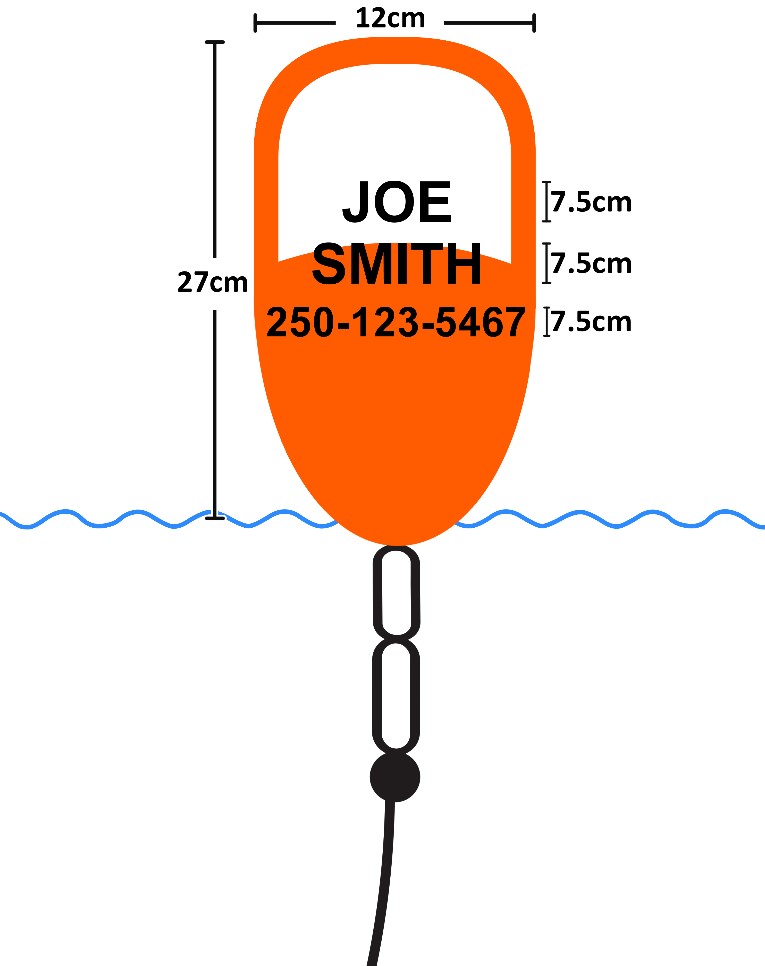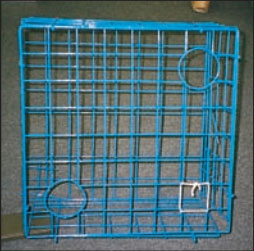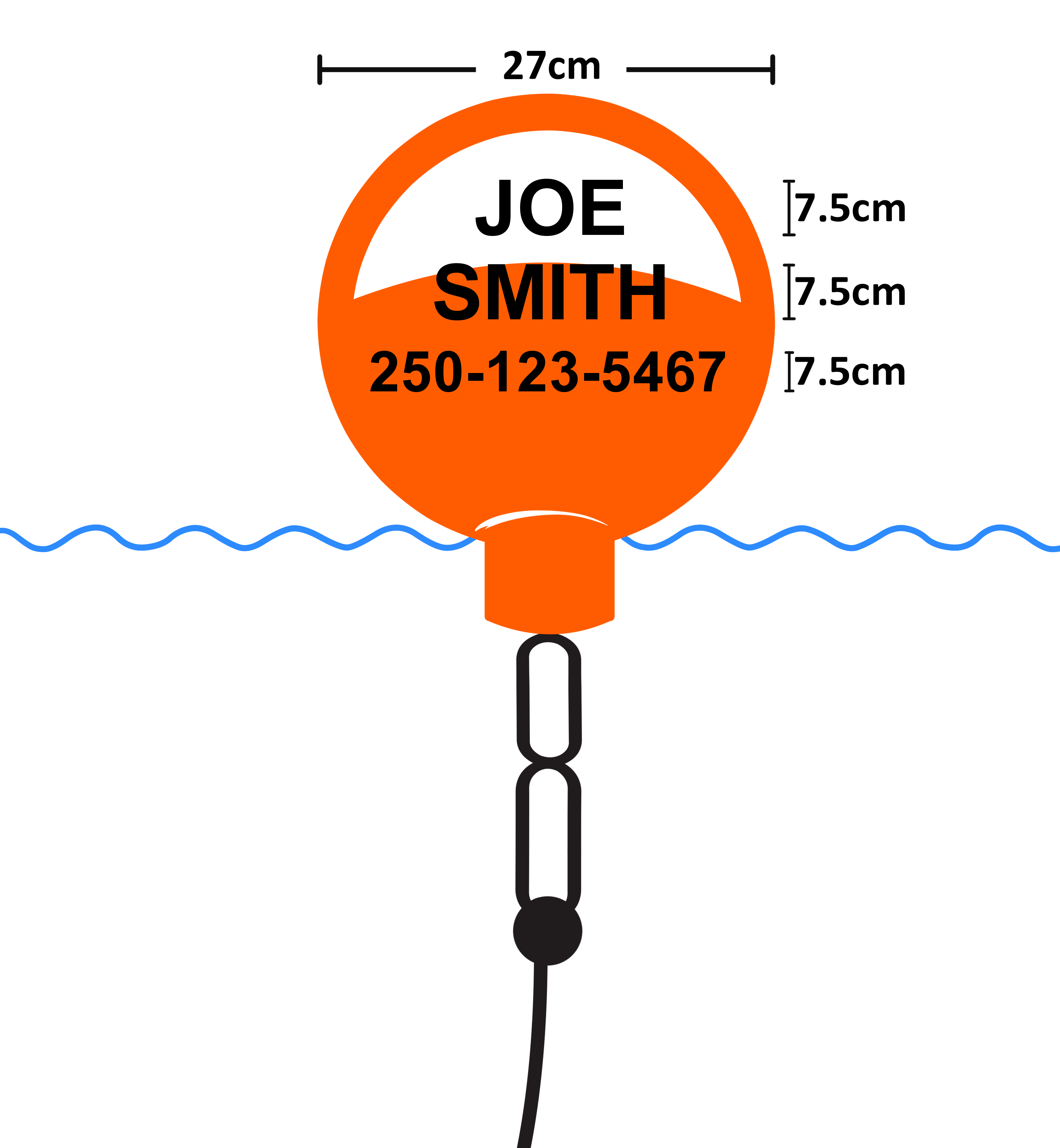Allowable gear for recreational shellfish harvesting in B.C.
You must use only allowable gear while harvesting shellfish.
Bait
Bait
The following bait is allowed while harvesting shellfish and invertebrates:
- fish offal
- herring
- mackerel
- northern anchovy
- Pacific sardine
It is illegal to use any other finfish as bait.
Gear entanglement
Gear entanglement
Set your traps to avoid gear entanglement.
Boat propellers
You must use a sinking line or weights, or coil the excess line to keep traps below the surface during all tide levels; do not sink the float

Navigation channels
- Do not place lines or floats in navigation channels
- You must use a sinking line or weights, or coil the excess line to keep traps below the surface during all tide levels; do not sink the float
- Fishing gear that interferes with safe navigation can be removed under the Navigation Protection Act
Research equipment
Gear may become entangled with Oceans Networks Canada research equipment in various tidal waters around B.C. See Notice for Mariners for more information.
Crab gear
Crab gear
You may only harvest crab using:
- traps
- ring nets
- dip nets
- hand picking
In some areas, you may fish for crab with ring nets only.
It is illegal to use:
- snares
- rakes
- spears
- any other pointed instrument
Traps
Crab traps must:
- have 2 unobstructed circular escape holes or rings measuring at least 105 mm in diameter
- be marked with your name only. Do not use gear marked with another fisher’s name
Trap floats

Long text version
The image shows a spherical float that is 27 cm long and 12 cm in diameter. The float bears the name and phone number of the sample fisher, Joe Smith. All letters and numbers are marked as being 7.5 cm high.
Primary trap floats must be:
- cylindrical or bullet shaped
- highly visible and a minimum of 27cm in length and 12 cm in diameter so they stay afloat in tides and currents
Secondary trap floats may be:
- any shape other than spherical
- any size
All trap floats must:
- be made of a durable material suitable for marine waters
- be marked with only your name and phone number in legible and visible letters (at least 7.5 cm high) that are consistent in orientation on the float
Multiple traps
You may use up to 2 rings, dip nets or traps in combination. 2 crab traps attached to 1 ground line may be marked with only 1 float.
Trap recovery
You may use mechanical devices to recover traps.
Rot cord

You must use rot cord on all crab traps to allow crabs in lost traps to escape. To use rot cord:
- ensure your trap has an opening in the top or side wall that is at least 7 cm x 20 cm (if it is a rectangle) or 11 cm x 11 cm (if it is a square)
- if your trap came with treated twine, remove it. You can tell if twine is treated as it will melt rather than burn
- sew the opening shut with a single strand of untreated cotton twine no greater than #120 (5 mm or 3/16 inches in diameter)
- if your trap has a hinged lid on a rigid frame, secure the lid with only a single strand of untreated cotton twine no greater than #120. No other fastener is permitted
Prawn and shrimp gear
Prawn and shrimp gear
You may only harvest prawn and shrimp using:
- traps
- ring nets
- spears while diving
Traps
We encourage you to use traps that catch a good range of prawn sizes while allowing smaller prawns to escape. Traps with 2.5 cm (1 inch) between knots or a 2 cm (3/4 inch) mesh work well.
Trap floats

Long text version
The image shows a spherical float that is 27 cm wide. The float bears the name and phone number of the sample fisher, Joe Smith. All letters and numbers are marked as being 7.5 cm high.
Primary trap floats must be:
- spherical
- a minimum of 27cm in diameter
Scotchman style floats often meet these requirements and can be found at most tackle retailers.
Secondary trap floats may be:
- any shape other than cylindrical
- any size
All trap floats must:
- be made of a durable material suitable for marine waters
- be marked with only your name and phone number in legible and visible letters (at least 7.5 cm high) that are consistent in orientation on the float
Multiple traps
You may set multiple traps on a single ground line provided you mark all tags and buoys with your name and you follow these rules:
| Number of traps | Line and marking requirements | Detail |
|---|---|---|
| 1 | 1 floating tag or buoy | |
| 2 | 1 ground line marked with 1 floating tag or buoy | You can use a maximum of 2 traps for crab harvesting |
| 3 or more | 1 ground line with both ends marked with a floating tag or buoy | You can use a maximum of 4 traps for shrimp and prawn harvesting |
Trap recovery
You may use mechanical devices to recover traps.
Rot cord
You must use rot cord on all prawn traps to allow prawns in lost traps to escape. To use rot cord:
- ensure your trap has an opening in the top or side wall that is at least 7 cm x 20 cm (if it is a rectangle) or 11 cm x 11 cm (if it is a square)
- if your trap came with treated twine, remove it. You can tell if twine is treated as it will melt rather than burn
- sew the opening shut with a single strand of untreated cotton twine no greater than #120 (5 mm or 3/16 inches in diameter)
- if your trap has a hinged lid on a rigid frame, secure the lid with only a single strand of untreated cotton twine no greater than #120. No other fastener is permitted
Other species-specific gear
Species-specific gear
Clam gear
It is illegal to dredge or to use mechanical apparatuses to harvest clams.
Octopus gear
It is illegal to harvest octopus using:
- snares
- chemicals
- hand pumps
- sharp-pointed instruments
Rot cord
You must use rot cord on all octopus traps to allow octopus in lost traps to escape. To use rot cord:
- ensure your trap has an opening in the top or side wall that is at least 7 cm x 20 cm (if it is a rectangle) or 11 cm x 11 cm (if it is a square)
- if your trap came with treated twine, remove it. You can tell if twine is treated as it will melt rather than burn
- sew the opening shut with a single strand of untreated cotton twine no greater than #120 (5 mm or 3/16 inches in diameter)
- if your trap has a hinged lid on a rigid frame, secure the lid with only a single strand of untreated cotton twine no greater than #120. No other fastener is permitted
All trap floats must:
- be made of a durable material suitable for marine waters
- be marked with only your name and phone number in legible and visible letters (at least 7.5 cm high) that are consistent in orientation on the float
Related links
- Every season every trap counts: information on catch success by season, setting safe traps, daily catch limits and more
- Prawns spawn: how to size prawns, identify egg-bearing females and more
- Date modified: